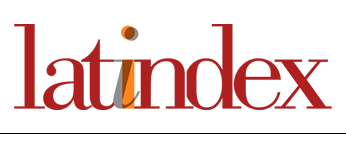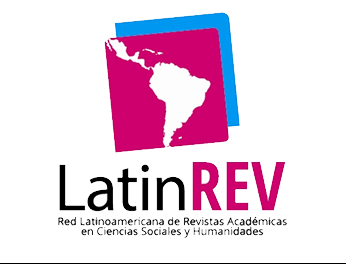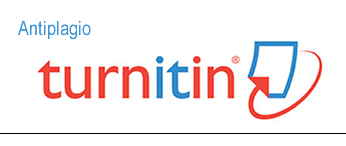Predictores de la satisfacción estudiantil y de la intención de terminar la escuela media en la academia técnica para adultos de Boston
Resumen
El estudio buscó establecer si la tutoría percibida, el clima escolar per- cibido y la autoeficacia son predictores de la satisfacción de los estudiantes y la intención de completar la escuela secundaria en Academia Técnica para Adultos de Boston (BATA, por sus siglas en inglés), ubicada en Boston, Massachusetts, EE. UU. La investigación tuvo un enfoque cuantitativo, no experimental, transversal y predictivo. La población estuvo compuesta por 140 estudiantes, 72 de los cuales participaron del estudio. Se aplicó la téc- nica estadística de regresión lineal para el probar las hipótesis. Se encontró que el clima escolar y la autoeficacia explicaron el 40.3% de la varianza de la satisfacción escolar. La autoeficacia y la tutoría explicaron el 27.1% de la varianza de la intención de continuar la escuela secundaria. Además, se observó una diferencia significativa de percepción del clima escolar entre los estudiantes que trabajan y los que no trabajan. La t de Student reveló que los alumnos que no trabajan están más satisfechos con la escuela que los que trabajan y estudian.
Descargas
Citas
Ackerman, D. S. y Gross, B. L. (2018). You gave me a B-?! Self-efficacy, implicit theories, and student reactions to grades. Journal of Marketing Education, 42(2), 149–156. https://doi.org/10.1177/0273475318777279 DOI: https://doi.org/10.1177/0273475318777279
Anderson, M. K., Anderson, R. J., Tenenbaum, L. S., Kuehn, E. D., Brown, H. K., Ramadorai, S. B. y Yourick, D. L. (2019). The benefits of a near-peer mentoring experience on STEM persistence in education and careers: A 2004-2015 study. Journal of STEM Outreach, 2(1). https://doi.org/10.1007/s10755-014-9286-3 DOI: https://doi.org/10.15695/jstem/v2i1.01
Back, L. T., Polk, E., Keys, C. B. y McMahon, S. D. (2016). Classroom management, school staff relations, school climate, and academic achievement: Testing a model with urban high schools. Learning Environments Research, 19(3), 397–410. https://doi.org/10.1007/s10984-016-9213-x DOI: https://doi.org/10.1007/s10984-016-9213-x
Baier, S. T., Markman, B. S. y Pernice-Duca, F. M. (2016). Intent to persist in college freshmen: The role of self-efficacy and mentorship. Journal of College Student Development, 57(5), 614–619. http://doi.org/10.1353/csd.2016.0056 DOI: https://doi.org/10.1353/csd.2016.0056
Balfanz, R., Bridgeland, J. M., Fox, J. H., DePaoli, J. L., Ingram, E. S. y Maushard, M. (2014). Building a grad nation: Progress and challenge in ending the high school dropout epidemic. Civic Enterprises.
Bandura, A. (1977). Self-efficacy: Toward a unifying theory of behavioral change. Psychological Review, 84 (2), 191-215. https://doi.org/10.1037/0033-295X.84.2.191 DOI: https://doi.org/10.1037/0033-295X.84.2.191
Bandura, A. (2003). Self-efficacy: The exercise of control. W. H. Freeman.
Berk, R. A., Berg, J., Mortimer, R., Walton-Moss, B. y Yeo, T. P. (2005). Measuring the effectiveness of faculty mentoring relationships. Academic Medicine, 80(1), 66–71. https://doi.org/10.1097/00001888-200501000-00017 DOI: https://doi.org/10.1097/00001888-200501000-00017
Brown, T. M., Galindo, C., Quarles, B. y Cook, A. L. J. (2019). Self-efficacy, dropout status, and the role of in-school experiences among urban, young adult school leavers and non-leavers. The Urban Review, 51(5), 816–844. https://doi.org/0.1007/s11256-019-00508-3 DOI: https://doi.org/10.1007/s11256-019-00508-3
Bruce, M. y Bridgeland, J. (2014). The mentoring effect: Young people’s perspectives on the outcomes and availability of mentoring. Civic Enterprises with Hart Research Associates for MENTOR: The National Mentoring Partnership. https://eric.ed.gov/?id=ED558065
Buckman, D. G., Hand, N. W. J. y Johnson, A. (2021). Improving high school graduation through school climate. NASSP Bulletin, 105(1), 5–24. https://doi.org/10.1177/0192636521993212 DOI: https://doi.org/10.1177/0192636521993212
Cohen, J., Pickeral, T. y McCloskey, M. (2009). Assessing school climate. Education Digest. Essential Readings Condensed for Quick Review, 74(8), 45–48. http://eric.ed.gov/?id=EJ857686
Cummins, R. y Tomyn, A. (2011). The subjective well-being of high-school students: Validating the personal wellbeing index-school children. Social Indicators Research, 101(3), 405–418. https://doi.org/10.1007/s11205-010-9668-6 DOI: https://doi.org/10.1007/s11205-010-9668-6
DeWitz, S. J. y Walsh, W. B. (2002). Self-efficacy and college student satisfaction. Journal of Career Assessment, 10(3), 315–326. https://doi.org:10.1177/10672702010003003 DOI: https://doi.org/10.1177/10672702010003003
Domenech-Betoret, F., Abellán-Roselló, L. y Gómez-Artiga, A. (2017). Self-efficacy, satisfaction, and academic achievement: The mediator role of students’ expectancy-value beliefs. Frontiers in Psychology, 8, Artículo 1193. https://doi.org/10.3389/fpsyg.2017.01193 DOI: https://doi.org/10.3389/fpsyg.2017.01193
Garza, K. K., Bain, S. F. y Kupczynski, L. (2014). Resiliency, self-efficacy, and persistence of college seniors in higher education. Research in Higher Education Journal, 26. https://eric.ed.gov/?id=EJ1055323
Gewertz, C. (2017, 20 de junio). Trump wants more apprenticeships–starting in high school. Education Week. https://www.edweek.org/teaching-learning/trump-wants-more-apprenticeships-starting-in-high- school/2017/06
Greene, B. A., Miller, R. B., Crowson, H. M., Duke, B. L. y Akey, K. L. (2004). Predicting high school students' cognitive engagement and achievement: Contributions of classroom perceptions and motivation. Contemporary Educational Psychology, 29(4), 462–482. https://doi.org/10.1016/j.cedpsych.2004.01.006 DOI: https://doi.org/10.1016/j.cedpsych.2004.01.006
Haines, S. L. y Popovich, N. G. (2014). Engaging external senior faculty members as faculty mentors. American Journal of Pharmaceutical Education, 78(5), 1–6. https://doi.org/10.5688/ajpe785101 DOI: https://doi.org/10.5688/ajpe785101
Hair, J., Anderson, R., Tatham, R. y Black, W. (2007). Multivariate analysis (5th ed.). Prentice-Hall. Hardre, P. L. y Reeve, J. (2003). A motivational model of rural students' intentions to persist in, versus drop out of, high school. Journal of Educational Psychology, 95(2), 347–356. https://doi.org/10.1037/0022-0663.95.2.347 DOI: https://doi.org/10.1037/0022-0663.95.2.347
Hand, N. (2019). The relationship between school climate and graduation rates from a control perspective: Comparing Georgia Public High Schools [Tesis doctoral, Kennesaw State University]. Digital Commons. https://digitalcommons.kennesaw.edu/educleaddoc_etd/21
Hatcher, L., Kryter, K., Prus, J. S. y Fitzgerald, V. (1992). Predicting college student satisfaction, commitment, and attrition from investment model constructs. Journal of Applied Social Psychology, 22(16), 1273–1296. https://doi.org/10.1111/j.15591816.1992.tb00950.x DOI: https://doi.org/10.1111/j.1559-1816.1992.tb00950.x
Hellman, C. y Harbeck, D. (1997). Academic self-efficacy: Highlighting the first-generation student. Journal of Applied Research in the Community College, 4(2), 165–169. https://eric.ed.gov/?id=EJ552715
Hernández, P. R., Bloodhart, B., Barnes, R. T., Adams, A. S., Clinton, S. M., Pollack, I., Godofredo, E.,Burt, M. y Fischer, E. V. (2017). Promoting professional identity, motivation, and persistence: Benefits of an informal mentoring program for female undergraduate students. PLOS ONE, 12(11), e0187531. https://doi.org/10.1371/journal.pone.0187531 DOI: https://doi.org/10.1371/journal.pone.0187531
Herrera, C., Grossman, J. B., Kauh, T. J., Feldman, A. F., McMaken, J. y Jucovy, L. Z. (2007). Making a difference in schools: The big brothers big sisters school-based mentoring impact study. Public/Private Ventures. http://ppv.issuelab.org/resources/574/574.pdf
Ibáñez García, A., Gallego Álvarez, T., García Román, M. D., Guillén Martín, V. M., Tomé Merchán, D. y Castro Zamudio, S. (2020). University mentoring programmes for gifted high school students: Satisfaction of workshops. Sustainability, 12(13), 5282. https://doi.org/10.3390/su12135282 DOI: https://doi.org/10.3390/su12135282
Ito, A. y Smith, D. C. (2006). Predictors of school satisfaction among Japanese and U.S. youth. Community Psychologist, 38, 19–21. https://doi.org/10.1037/e628622012-468 DOI: https://doi.org/10.1037/e628622012-468
Jia, Y., Konold, T. R. y Cornell, D. (2016). Authoritative school climate and high school dropout rates. School Psychology Quarterly, 2, 289–303. https://doi.org/10.1037/spq0000139 DOI: https://doi.org/10.1037/spq0000139
Johnson, B. y Stevens, J. J. (2006). Student achievement and elementary teachers’ perceptions of school climate. Learning Environments Research, 9, 111–122. https://doi.org/10.1007/s10984-006-9007-7 DOI: https://doi.org/10.1007/s10984-006-9007-7
Karcher, M. J. y Nakkula, M. J. (2010). Youth mentoring with a balanced focus, shared purpose, and collaborative interactions. New Directions for Youth Development, 126,13–32. https://doi.org/10.1002/yd.347 DOI: https://doi.org/10.1002/yd.347
Kotok, S., Ikoma, S. y Bodovski, K. (2016). School climate and dropping out of school in the era of accountability. American Journal of Education, 122(4), 569–599. https://doi.org/10.1086/687275 DOI: https://doi.org/10.1086/687275
Liem, A. D., Lau, S. y Nie, Y. (2008). The role of self-efficacy, task value, and achievement goals in predicting learning strategies, task disengagement, peer relationship, and achievement outcome. Contemporary Educational Psychology, 33(4), 486–512. https://doi.org/10.1016/j.cedpsych.2007.08.001 DOI: https://doi.org/10.1016/j.cedpsych.2007.08.001
Lodi, E., Boerchi, D., Magnano, P. y Patrizi, P. (2019). High-School Satisfaction Scale (H-Sat Scale): Evaluation of contextual satisfaction in relation to high-school students' life satisfaction. Behavioral Sciences, 9(12), 125-141. https://doi.org/10.3390/bs9120125 DOI: https://doi.org/10.3390/bs9120125
Lubienski, S. T., Lubienski, C. y Crane, C. C. (2008). Achievement differences and school type: the role of school climate, teacher certification, and instruction. American Journal of Education, 115(1), 97–138. https://doi.org/10.1086/590677 DOI: https://doi.org/10.1086/590677
Majer, J. M. (2009). Self-efficacy and academic success among ethnically diverse first-generation community college students. Journal of Diversity in Higher Education, 2(4), 243–250. https://doi.org/10.1037/a0017852 DOI: https://doi.org/10.1037/a0017852
National Center for Education Statistics. (2022). Status dropout rates. National Center for Education Statistics. https://nces.ed.gov/programs/coe/indicator/coj
National School Clinical Center. (2013). The Comprehensive School Climate Inventory. NSCC. https://schoolclimate.org/services/measuring-school-climate-csci/
Prifti, R. (2022). Self-efficacy and student satisfaction in the context of blended learning courses. Open Learning: The Journal of Open, Distance and e-Learning, 37(2), 111–125. https://doi.org/10.1080/02680513.2020.1755642 DOI: https://doi.org/10.1080/02680513.2020.1755642
Princiotta, D. y Reyna, R. (2009). Achieving graduation for all: A governor's guide to dropout prevention and recovery. National Governor's Association, Center for Best Practices. https://files.eric.ed.gov/fulltext/ED507071.pdf
Reyes, M. R., Brackett, M. A., Rivers, S. E., White, M. y Salovey, P. (2012). Classroom, emotional climate, student engagement, and academic achievement. Journal of Educational Psychology, 104(3), 700–712. https://doi.org/10.1037/a0027268 DOI: https://doi.org/10.1037/a0027268
Schunk, D. H. y Mullen, C. A. (2013). Toward a conceptual model of mentoring research: Integration with self-regulated learning. Educational Psychology Review, 25(3), 361–389. https://doi.org/10.1007/s10648-013-9233-3 DOI: https://doi.org/10.1007/s10648-013-9233-3
Scribner, L. (2019). Peer mentoring effect on student satisfaction at a two-year institution [Tesis doctoral, University of South Florida]. Digital Commons. https://digitalcommons.usf.edu/cgi/viewcontent.cgi?article=9128&context=etd
Simonsen, I.-E. y Rundmo, T. (2020). The role of school identification and self-efficacy in school satisfaction among Norwegian high-school students. Social Psychology of Education, 23(6), 1565–1586. https://doi.org/10.1007/s11218-020-09595-7 DOI: https://doi.org/10.1007/s11218-020-09595-7
Suldo, S. M., Thalji-Raitano, A., Hasemeyer, M., Gelley, C. D. y Hoy, B. (2012). Understanding middle school students life satisfaction: Does school climate matter? Applied Research in Quality of Life, 8(2), 169–182. https://doi.org/10.1007/s11482012-9185-7 DOI: https://doi.org/10.1007/s11482-012-9185-7
Thijs, J. y Verkuyten, M. (2008). Peer victimization and academic achievement in a multiethnic sample: The role of perceived academic self-efficacy. Journal of Educational Psychology, 100(4), 754–764. https://doi.org/10.1037/a0013155 DOI: https://doi.org/10.1037/a0013155
Turner, S. y Lapan, R.T. (2002). Career self-efficacy and perceptions of parent support in adolescent career development. Career Development Quarterly, 51(1), 44–55. https://doi.org/10.1002/j.2161-0045.2002.tb00591.x DOI: https://doi.org/10.1002/j.2161-0045.2002.tb00591.x
Wang, L-Y., Tan, L-S., Li, J-Y., Tan, I. y Lim, X-F. (2017). A qualitative inquiry on sources of teacher efficacy in teaching low-achieving students. The Journal of Educational Research,110(2), 140–150. https://dx.doi.org/10.1080/00220671.2015.1052953 DOI: https://doi.org/10.1080/00220671.2015.1052953
Washor, E. y Mojkowski, C. (2013). Leaving to learn: How out-of-school learning increases student engagement and reduces drop-out rates. Heinemann.
Wright, S. L., Jenkins-Guarnieri, M. A. y Murdock, J. L. (2012). Career development among first- year college students: Self-efficacy, student persistence, and academic success. Journal of Career Development, 40(4), 292–310. https://doi.org/10.1177/0894845312455509 DOI: https://doi.org/10.1177/0894845312455509
Yadav, S. K., Bharadwaj, B. y Pal, S. (2012). Data mining applications: A comparative study for predicting student's performance. International Journal of Innovative Technology & Creative Engineering, 1(12), 13–19. https://ia800305.us.archive.org/34/items/IJITCE/Dec11-3.pdf
Zullig, K. J., Huebner, E. S. y Patton, J. M. (2010). Relationships among school climate domains and school satisfaction. Psychology in the Schools, 48(2), 133–145. https://doi.org/10.1002/pits.20532 DOI: https://doi.org/10.1002/pits.20532











